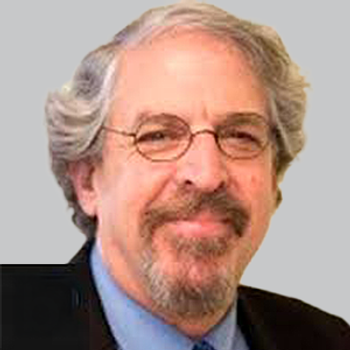
Pitolisant Reduces ESS Scores Up to 5 Years in Patients with Excessive Daytime Sleepiness
By the open-label extension’s end, those treated with pitolisant showed a decrease in ESS score by 6.2 from baseline.
Jeffrey Dayno, MD
Pitolisant has shown to improve excessive daytime sleepiness in new data presented by manufacturer Harmony Biosciences at the 7th International Symposium on Narcolepsy in Beverly, Massachusetts.
In phase II open-label trial, the highly selective histamine 3 (H3) receptor antagonist decreased the Epworth Sleepiness Scale (ESS) score from 16.8 to 13.4 after 1 year, with continued improvement over the course of the 5-year trial. By its end, those treated with pitolisant showed a decrease in ESS score by 6.2 from baseline.
The therapy enhances histaminergic neurons to improve wakefulness as well as inhibit cataplexic attacks.
"The Harmony III open-label, long-term study for pitolisant reflects real-world experience of people living with the debilitating effects of excessive daytime sleepiness and cataplexy in narcolepsy," said Jeffrey Dayno, MD, Harmony's chief medical officer, in a statement.1 "Pitolisant is a first-in-class molecule with a novel mechanism of action that works through the histaminergic system to improve wakefulness and inhibit attacks of cataplexy. In an extension of the Harmony III long-term study, the safety, tolerability, and durability of effect of pitolisant were assessed out to 5 years in those patients who stayed in the study until the end."
Additionally, the therapy showed that multiple symptoms of REM dysregulation were reduced from baseline to year 1. Symptoms of cataplexy were reduced by 76%, hypnagogic hallucinations were reduced by 54%, and sleep paralysis was reduced by 62%. The 5-year data on these symptoms was limited.
Michael Thorpy, MBChB, the director of the Sleep-Wake Disorders Center at Montefiore Medical Center, told NeurologyLive that treating sleepiness is very difficult, as there is always a drive for sleepiness that’s there, and the majority of medicines in this space are intended to help people remain awake.
“Now, a lot of people don’t understand this about the alerting medications,” Thorpy said. “These medications don’t get rid of sleepiness—they help people stay awake. So, if you have someone with narcolepsy, you can give them high doses of amphetamines, methylphenidate, or modafinil, put them in a darkened room, and turn the light out, and tell them to relax, they will go to sleep, even though they’re taking high doses of those medications.”
Thorpy said that due to this there is a definite need for better and more effective medications. This has opened the door for new potential treatments like pitolisant.
Patients in the trial at the French sites (n = 77) were invited to participate in the extension period to 5 years, with follow-up visits every 6 months. Of that group, 65% (n = 50) completed the first 12-month period, with 48 patients electing to participate in the extension. In total, 67% of those patients (n = 32) remained on the therapy for 5 years.
All told, 80% to 88% of patients maintained the use of 40-mg pitolisant daily during the trial. The safety data was consistent with what has been previously reported. The most common adverse events (AEs) were headache, insomnia, weight increase, anxiety, depression, nausea, vomiting, and irritability. In total, 16% of patients discontinued treatment due to AEs, and there was no evidence of tolerance with long-term use of the trial therapy, and no symptoms of withdrawal were reported when patients discontinued therapy.
Pitolisant has previously been granted an Orphan Drug designation for the treatment of narcolepsy, as well as Fast Track designation for the treatment of excessive daytime sleepiness and cataplexy in patients with narcolepsy, and a Breakthrough Therapy designation for the treatment of cataplexy in narcolepsy.
Harmony has stated that its goal is to obtain FDA approval for the therapy next year. If approved, it would be the first new treatment for both cataplexy and excessive daytime sleepiness in more than a decade.
In May, the company announced that it was enrolling patients in its PEACE (Pitolisant Expanded Access Clinical Evaluation) program, an open-label Expanded Access Program to provide the therapy to patients in the US with excessive daytime sleepiness.2
REFERENCES
1. Harmony Biosciences Presents 5-Year Data On Pitolisant At International Narcolepsy Symposium [press release]. Plymouth Meeting, PA: Harmony Biosciences, LLC; Published September 11, 2018. harmonybiosciences.com/news/2018/9/10/harmony-biosciences-presents-5-year-data-on-pitolisant-at-international-narcolepsy-symposium. Accessed September 12, 2018.
2. Harmony Biosciences Receives Breakthrough Therapy And Fast Track Designations For Pitolisant. Expanded Access Program For Pitolisant Is Open And Patients Are Being Enrolled [press release]. Plymouth Meeting, PA: Harmony Biosciences, LLC; Published May 21, 2018. harmonybiosciences.com/news/2018/05/21/press-release. Accessed September 12, 2018.
Newsletter
Keep your finger on the pulse of neurology—subscribe to NeurologyLive for expert interviews, new data, and breakthrough treatment updates.


































